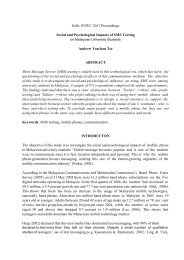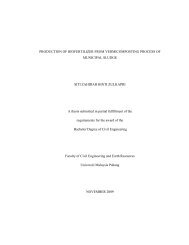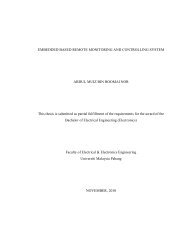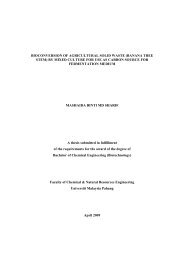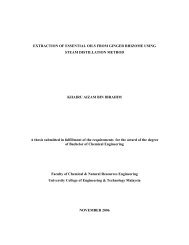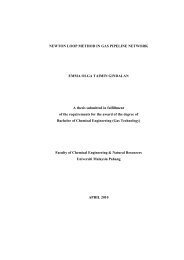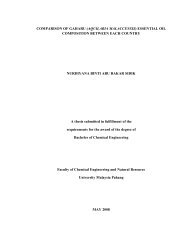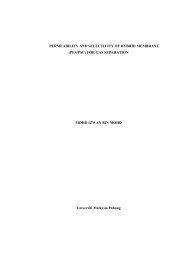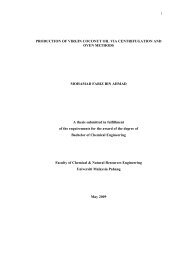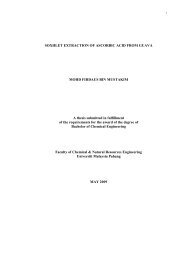CHAPTER 1 - Universiti Malaysia Pahang
CHAPTER 1 - Universiti Malaysia Pahang
CHAPTER 1 - Universiti Malaysia Pahang
Create successful ePaper yourself
Turn your PDF publications into a flip-book with our unique Google optimized e-Paper software.
hybridization with synthetic fibers such as glass fiber. In this research, mechanical<br />
properties of short sisal-PP composites and short sisal/glass fiber hybrid composites<br />
were studied. Polypropylene grafted with maleic anhydride (PP-g-MA) was used as a<br />
compatibilizer to enhance the compatibility between the fibers and polypropylene.<br />
Effect of weight ratio of sisal and glass fiber at 30 % by weight on the mechanical<br />
properties of the composites was investigated. Morphology of fracture surface of<br />
each composite was also observed. (Kasama Jarukumjorn et al., 2008)<br />
2.2.4 Improvement of Physico-Mechanical Properties of Jute Fibre<br />
Reinforced Polypropylene Composites by Post-treatment<br />
Jute fiber reinforced polypropylene composites were manufactured using<br />
injection molding method. Raw jute fiber was oxidized and manufactured composites<br />
were post-treated with urotropine. Both raw and oxidized jute fiber at four level of<br />
loading (20, 25, 30 and 35 wt%) was utilized during manufacturing. Microstructural<br />
analysis and mechanical tests were conducted. Post-treated specimens yielded better<br />
mechanical properties compared to the oxidized and raw ones. Based on fiber<br />
loading, 30% fiber reinforced composites had the optimum set of mechanical<br />
properties. Authors propose that the bonding between the polypropylene matrix and<br />
urotropine treated jute fiber must be improved in order to have better mechanical<br />
properties at higher fiber content. (Md. Rezaur Rahman et al., 2008)<br />
2.2.4 Mechanical Properties of Flax Fibres and Their Composites<br />
Generally, plant or vegetable fibers are used to reinforce plastics. The main<br />
polymers involved in the composition of plant fibers are cellulose, hemicelluloses,<br />
lignin and pectin. Let us consider very popular flax fibers to understand the intricate<br />
structure of plant fibers. The ~1 meter long so-called technical fibers are isolated<br />
from the flax plant for the use in textile industry. These technical fibers consist of<br />
9



